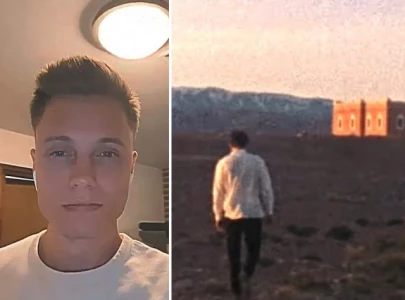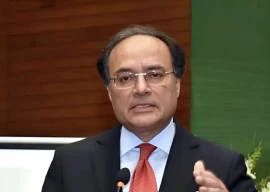
To the avid explorer, Sindh has much to offer. It is a land that has fascinated many a historian and romantic for its rich culture, art and architectural landscape. The chronicles, music, customs and crafts of the region form a mosaic of human history.
A cultural showcase titled, “Sindh: A Mystical Journey” brought to the fore the history, customs, cultures, traditional crafts and music of Sindh opened at the Pakistan National Council of the Arts on Thursday.
AH Akhund, who hosted a talk at the event, has been presenting Sindh’s cultural heritage to the outside world for over 40 years.
He has been actively involved in setting up cultural institutions in Sindh including the department of culture and the famous Mohatta Palace Museum in Karachi where he has curated many exhibitions pertaining to the country’s heritage.

Akhund said the current generation is not much interested in learning about the region’s history. “When a child goes to school in the West, he or she is made to learn about the native culture, languages and civilisations but schoolchildren here have little or no knowledge of their culture. They do not know about the practices of Sufism.”
“For us foreigners, it is a unique opportunity to learn about the history and culture of Pakistan, because with the security situation, our travels are restricted,” said Belgian Ambassador Peter Claes while talking to The Express Tribune.
Visitors browsed through Sindhi arts and crafts on display, including traditional Sindhi attire, blue and red ajrak, embroidered khussas, ivory bangles, print motifs and sussi cotton.

Attracting a crowd of foreigners was the truck art stall. A painter, Al Habib Ejaz, furtively brushed bold strokes of oil paint on a metallic teapot, enlivening it with neons and black. “Usually, people have the impression that all truck art is the same. But if you look closely, the Sindhi kind is relatively closer to nature,” he said. In rural Sindh, trucks are decorated with camel bones while the Karachi trucks have reflective tapes, he said further.
Following the display, a multimedia presentation was screened at the auditorium. Akhund unravelled facets that remain less talked about. Tracing the civilisations of the lower Indus Valley from the time of Moenjo Daro, it touched upon the earliest navigators of the Indian Ocean who visited Sindh, Scylax, Nearchus and Periplus of the battle between the Meds and Jats and the march of Alexander.
It also traversed early sources of history, the Chachnama and the Tehrik-e-Masumi, the emergence of the Arghuns and Bilquis Bano’s marriage to Mughal king Humayun.
The event was organised by the Asian Study Group (ASG). Parveen Malik, ASG president said, “Pakistan is a diverse country, comprising people of various religions, ethnicities and cultures in just the Rajasthan and Sindh regions alone. But we have become fragmented and there is a dire need to learn about one another’s culture.”
Published in The Express Tribune, September 28th, 2013.



1719211536-0/BeFunky-collage-(81)1719211536-0-165x106.webp)



















COMMENTS
Comments are moderated and generally will be posted if they are on-topic and not abusive.
For more information, please see our Comments FAQ